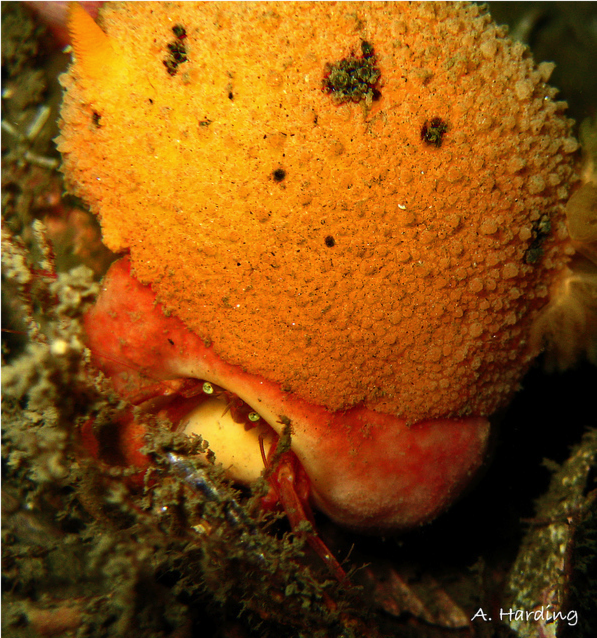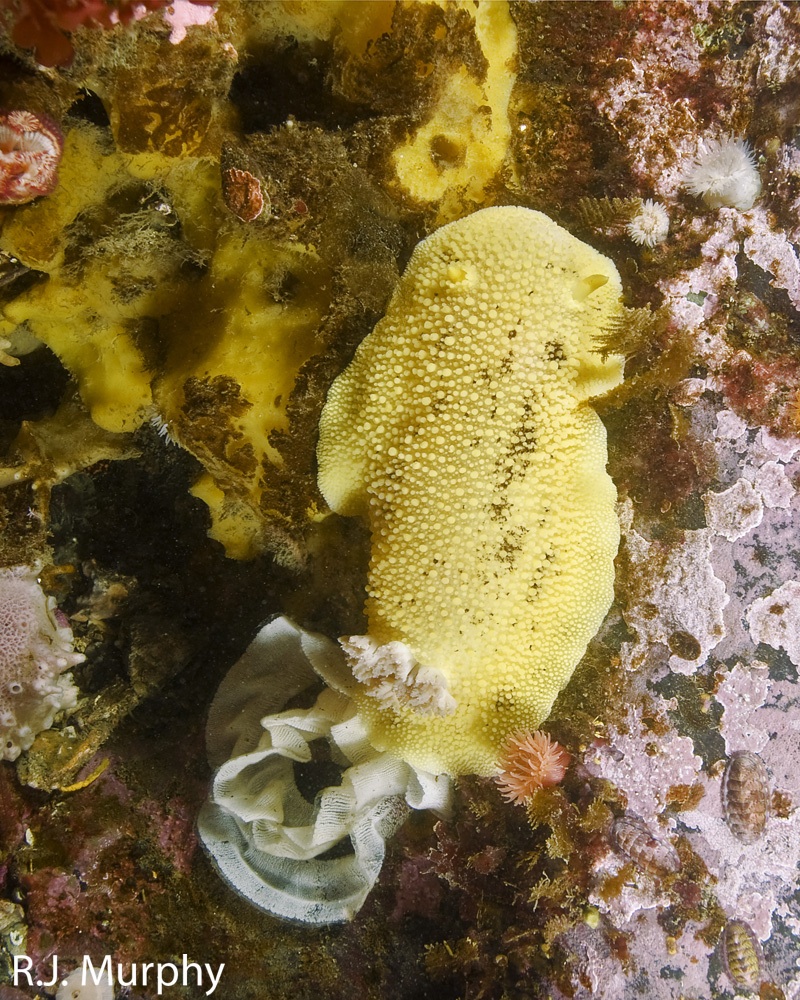Species tetraquetra
Tochuina tetraquetra: orange-peel nudibranch–The Race Rocks taxonomy
Species tetraquetra

At Race Rocks, this nudibranch probably feed on the soft coral ( Gersemia sp.)
Return to the Race Rocks Taxonomy Index and gallery
This file is provided as part of a collaborative effort by the students, faculty, volunteers and staff of Lester B. Pearson College– Oct 2010 , by Erik Schauff

This rather unique image of a sea slug eating a suberites sponge which houses a hermit crab was take by Adam Harding , Sept, 2010

A Sea Lemon that has just laid its eggs. Ryan took this image underwater at Race Rocks in the spring, 2009, it was formerly called Anisodoris nobilis
Domain Eukarya
Kingdom Animalia
Phylum Mollusca
Class Gastropoda
Order Opisthobranchia
Family Nudibranchia
Genus Peltodoris
Species nobilis
Common Name: Sea Lemon
Ryan Murphy
In this image is Flabellina verrucosa the “Three-lined” aeolid which is seasonally abundant from Baja to Alaska (Behrens, 1991). Aeolids are opisthobranch gastropods known as sea slugs because they have lost their shells. This photo shows the nudibranch’s “oral tentacles” (bottom), ridged sensory antennae called “rhinophores”, “cerata” which contain stolen stinging cells for defense, and a “propodial tentacle”. This aeolid is common year-round at the Race Rocks Ecological Reserve where it is often observed feeding on hydroids such as Tubularia. To the left of it is thesmall Granulina m.
Macro images by Ryan Murphy
Domain Eukarya
Kingdom Animalia
Phylum Mollusca
Class Gastropoda
Order Nudibranchia
Family Flabellinidae
Genus Flabellina
Species verrucosa
Common Name:nudibranch
Other molluscs at Race Rocks
 The Race Rocks taxonomy is a collaborative venture originally started with the Biology and Environmental Systems students of Lester Pearson College UWC. It now also has contributions added by Faculty, Staff, Volunteers and Observers on the remote control webcams. The Race Rocks taxonomy is a collaborative venture originally started with the Biology and Environmental Systems students of Lester Pearson College UWC. It now also has contributions added by Faculty, Staff, Volunteers and Observers on the remote control webcams.
Garry Fletcher |
An 8mm long nudibranch
Thanks to Karin Fletcher on iNaturalist for identifying this for us. She indicated that D. subramosus lack lateral papillae on their rhinophore sheaths and can have brown lines along from their rhinophores along their dorsolateral processes
https://www.inaturalist.org/observations/68751217
| Domain | Eukarya |
| Kingdom | Animalia |
| Phylum Order |
Mollusca Nudibranchia |
| Class | Gastropoda |
| Clade | Dendronotida? |
| Suborder | Dendronotacea? |
| Family | Dendronotidae? |
| Genus | Dendronotus |
| Species | subramosus |
| Common Name:Stubby-fronted Dendronotus |
| Other Members of the Phylum Arthropoda at Race Rocks |
and Image File |
 The Race Rocks taxonomy is a collaborative venture originally started with the Biology and Environmental Systems students of Lester Pearson College UWC. It now also has contributions added by Faculty, Staff, Volunteers and Observers on the remote control webcams. The Race Rocks taxonomy is a collaborative venture originally started with the Biology and Environmental Systems students of Lester Pearson College UWC. It now also has contributions added by Faculty, Staff, Volunteers and Observers on the remote control webcams.
October 2004- (PC) Garry Fletcher |